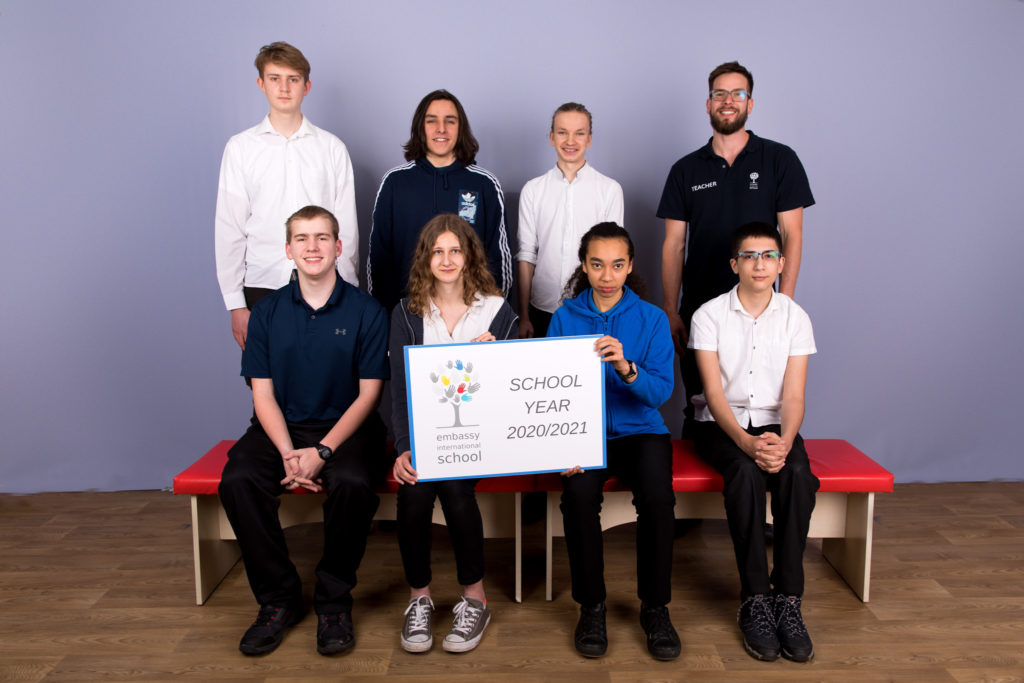Table of Content:
- Lower Secondary, Key Stage 3 (years 7, 8, 9)
- Upper Secondary, Key Stage 4 (years 10, 11)
- Upper Secondary, Key Stage 5 (years 12, 13)
- What is secondary school?
- Secondary school age
- Secondary education in the United Kingdom
- Private secondary schools
- International secondary schools
- How to apply for secondary school
- Secondary school admissions
Lower Secondary, Key Stage 3 (years 7, 8, 9)
Our educational approach in Lower Secondary, or Key Stage 3, builds upon the principles established in primary school. We blend direct instruction with inquiry-based learning, allowing students to engage deeply with the material. This stage features robust science education, supported by experiments in our custom-designed and well-equipped Science Lab. We emphasize an extended model of education that bases itself on the English National Curriculum but with additional focus on the sciences.
If a person doesn’t have material in their memory to work with, they have nothing to think about and by the same token, if we only focus on collecting facts, thinking skills aren’t being nurtured. We strike the balance by learning thinking skills and practising using them with the material we learn and store in our memories.
Upper Secondary, Key Stage 4 (years 10, 11)
As students enter Upper Secondary, they begin preparations for the General Certificate of Secondary Education (GCSE) exams, typically taken at ages 15 or 16. At Embassy International School, students typically study four lessons per week per chosen subject and typically aim to sit about 8 exams, although these exams are not compulsory. GCSE exams serve as an excellent measure of a student’s progress and can be critical for university admissions within the UK and some other countries, such as when someone wants to study in the Netherlands. Our curriculum ensures that all students take certain key subjects, fostering a well-rounded academic foundation and excellent preparation for A-levels.
In the Embassy International School we insist upon certain subjects being taken by all pupils – Maths, English and English Literature are obligatory,
Upper Secondary, Key Stage 5 (years 12, 13)
Key Stage 5 at Embassy International School represents an extension and further specialization of the skills and knowledge acquired in Key Stage 4. Students take A-level exams, which are critical for university admissions. During this stage, students choose their subjects based on their future academic and career goals, with guidance from our Careers and University Advisor. This personalized approach ensures that each student is prepared for their next steps, whether that be higher education or entering the professional world.

By offering a structured, supportive, and enriching environment, Embassy International School ensures that our secondary education not only meets but exceeds the traditional academic standards, preparing our students to thrive in a global context.
What is secondary school?
Secondary school, also referred to as high school in various regions, plays a pivotal role in the educational journey of students. This stage, covering Key Stages 3 to 5 in the British curriculum, caters to the adolescent years and prepares students for higher education and professional life. Secondary education involves a structured approach where students study a wide range of subjects leading up to more specialized courses in later years.
At Embassy International School, we follow the British Curriculum, so we structure our secondary education into distinct phases to cater to the evolving needs of our students as they progress through their adolescence.
Secondary school age
Secondary education typically spans from Year 7 to Year 13, accommodating students from approximately 11 to 18 years old. Each year group corresponds to specific birth years, ensuring that students are placed among peers of similar age and developmental stage. This period is critical for personal and academic growth, presenting both challenges and opportunities to develop key life skills.
Secondary education in the United Kingdom
Following the British curriculum, secondary schools offer a broad foundation in Key Stage 3 with subjects like Mathematics, English and sciences. Embassy International School splits Sciences into Biology, Chemistry, and Physics. In Key Stage 4, students progress to GCSE examinations, choosing specific subjects while continuing compulsory courses like PE. Key Stage 5 covers As and A Levels, allowing for deeper specialization in subjects chosen by the students based on their future aspirations.
Private secondary schools
Private secondary schools often offer distinct advantages over public schools, including smaller class sizes, enriched academic offerings, and diverse extracurricular activities. These schools might offer a wider array of international qualifications, which can be particularly appealing to families aiming for global higher education opportunities.
International secondary schools
International schools integrate global educational standards and diverse cultural perspectives, making them attractive for families in cosmopolitan environments. With curricula like A levels, athe IGCSE or International Baccalaureate, students receive education that prepares them for academic and professional environments anywhere in the world.
How to apply for secondary school
Each school has a slightly different organised recruitment process. Applying to an international secondary school involves understanding the application timeline and requirements, which can vary significantly from local admissions processes. It’s important to start early and be mindful of deadlines and necessary documentation to ensure a successful application.
Secondary school admissions
The admissions process for secondary schools typically includes academic records or transcripts, an interview with the family and with the prospective student, entrance exams or other forms of scholastic aptitude tests, and often recommendations or reference letters from previous schools. The reasons for this are that good schools with high academic expectations need to make sure they find out how a candidate learns and whether or not they are suited to the programme the school offers, and that this matches their university study options and dreams. It is also vital to understand young people during transition so that appropriate counselling or other support actions can be organised.


